Crypto Savings Calculator
Savings Comparison Calculator
Compare the value of your savings in Argentine pesos versus stablecoins over time, factoring in Argentina's high inflation rate.
Results Summary
When the peso loses value faster than a melting ice cube, people start looking for anything that can hold its worth. In Argentina, that "anything" has become cryptocurrency. Over the past few years the country’s runaway inflation-over 160% in 2023 and still above 40% by mid‑2025-has turned digital assets into a daily‑life tool rather than a speculative playground.
Cryptocurrency is a digital medium of exchange that relies on cryptographic proof instead of a central bank. In Argentina it’s most often used as a hedge against the peso’s erosion, especially through dollar‑pegged stablecoins. While Bitcoin still grabs headlines, it’s the stablecoins-USDT, USDC and DAI-that have become the go‑to savings vehicle for ordinary families, freelancers, and workers sending money abroad.
Why Stablecoins Dominate Argentine Savings
Stablecoins are designed to stay close to a reference asset, usually the U.S. dollar. That makes them far less volatile than Bitcoin or Ethereum, which is crucial when the primary goal is preserving purchasing power.
- USDT (Tether) is the world’s most traded stablecoin, with a market cap above $80billion in 2024.
- USDC (USD Coin) is fully backed by audited reserves, making it a favorite for regulatory‑savvy users.
- DAI is an algorithmic stablecoin on Ethereum that maintains its peg through collateralized debt positions, giving users a decentralized alternative.
Because the Argentine government enforces strict capital controls-preventing most citizens from opening dollar‑denominated bank accounts-stablecoins act as a "digital dollar" you can hold on a mobile phone without needing a foreign bank.
How the Lemon Platform Makes Crypto Savings Simple
One of the most practical stories comes from Lemon, a locally‑born fintech that bridges traditional payroll and crypto wallets. Here’s the typical flow:
- Employee receives salary in Argentine pesos.
- Through Lemon’s app, the payroll is automatically converted into USDC at the prevailing exchange rate.
- The USDC is stored in a custodial wallet that the user can monitor in real time.
- When the user wants to spend, Lemon issues a prepaid Visa debit card linked to the USDC balance. At the point of sale, the card converts USDC back to pesos instantly.
This process eliminates the need for a foreign bank account, cuts transaction fees to under 1%, and provides the same purchasing power as holding actual dollars.
Crypto vs. Traditional Savings: A Quick Comparison
| Feature | Stablecoins (USDT/USDC/DAI) | Local Peso Savings |
|---|---|---|
| Currency peg | ≈1USD | ≈1ARS (inflation‑adjusted) |
| Annual inflation impact | ~0% (price‑stable) | +40%(2025 estimate) |
| Access to foreign remittances | Instant, low‑fee transfers | Bank fees 3‑5%, 2‑5days processing |
| Regulatory certainty (2025) | CNV Resolution 1058/2025 provides oversight | Subject to capital controls |
| User adoption in Argentina (2024) | 19.8% of population own crypto | ~10% hold traditional foreign‑currency accounts |
The table shows why a growing middle class prefers stablecoins for long‑term savings: they lock in dollar value while staying accessible through familiar payment cards.
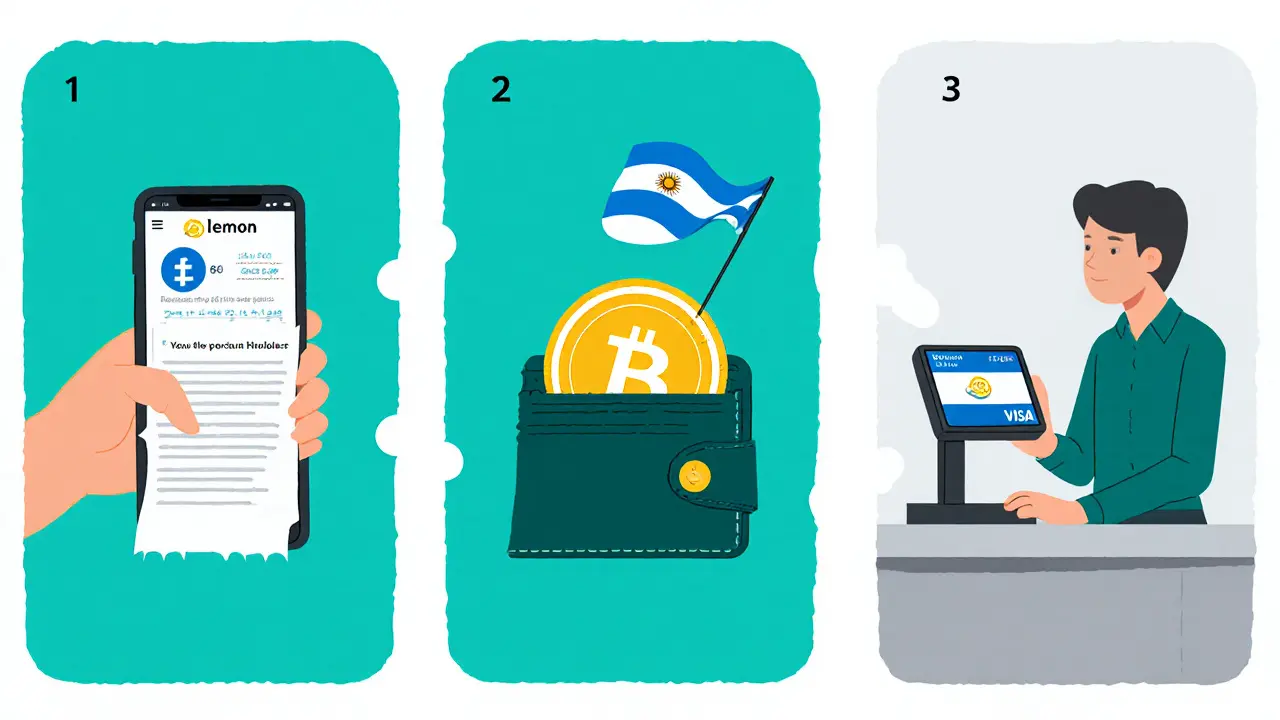
Remittances: Crypto Cuts the Middleman
Argentina’s outbound migration surged after the 2018 currency crisis. Families abroad now send an estimated $156billion annually back home. Traditional money‑transfer operators charge 3‑10% per transaction and can take up to a week to deliver funds.
Stablecoins change that equation dramatically. A worker in Spain can buy USDT on a global exchange, send the token to a family member’s Argentinian wallet, and the recipient can convert it to pesos within minutes-often for a total fee under 1%.
Community posts on X (formerly Twitter) repeatedly highlight stories like “my mom received $500 in USDC in 5minutes, saved on fees, and bought groceries without waiting for the bank.” This real‑world feedback fuels further adoption, especially among younger, tech‑savvy Argentines.
Regulatory Landscape: From Uncertainty to Framework
Until 2024, Argentina’s crypto sector operated in a gray zone. President Javier Milei’s pro‑crypto rhetoric helped shift the tone, culminating in the National Securities Commission (CNV) adopting Resolution 1058/2025. This regulation sets licensing requirements for exchanges, introduces AML/KYC standards, and grants the CNV authority to oversee crypto‑related activities.
National Securities Commission (CNV) is now the official regulator for cryptocurrency businesses, providing legal clarity that encourages institutional participation. Major platforms like Binance have already registered under the new framework, while local players such as Lemon benefit from a standardized compliance environment.
Analysts argue that this regulatory certainty will attract fintech entrepreneurs, potentially turning BuenosAires into a regional crypto hub comparable to Singapore’s role in Asia.
Challenges Still Ahead
Even with stablecoins and a clearer legal backdrop, several hurdles remain:
- Internet access gaps: Although smartphone penetration is high in urban areas, rural communities still struggle with reliable connectivity, limiting crypto usage.
- Financial literacy: Understanding wallet security, private keys, and transaction fees requires basic education that many users lack.
- Exchange fees: While stablecoins reduce volatility, converting large sums between pesos and stablecoins can attract spread fees from local exchanges.
- Potential policy shifts: Future administrations may reverse Milei’s crypto‑friendly stance, creating uncertainty for long‑term investors.
Addressing these issues will be key to sustaining the momentum.
What the Future Holds for Argentine Crypto Savings
Looking ahead, three trends are likely to shape the ecosystem:
- More integrated payroll solutions: Companies may embed crypto conversion directly into HR software, making dollar‑denominated savings the default option for employees.
- Growth of DeFi lending: Platforms could let users earn interest on stablecoin deposits, offering yields that outpace traditional bank rates.
- Cross‑border payment corridors: Partnerships between Argentinian fintechs and foreign remittance services could create seamless crypto-to-fiat pipelines for migrants.
If these developments materialize, Argentina could become a live laboratory for how digital assets protect households against monetary instability-a model other high‑inflation economies might copy.

Frequently Asked Questions
How do I buy stablecoins in Argentina?
You can use major exchanges like Binance or local platforms such as Lemon. After creating an account, verify your identity, deposit pesos via bank transfer or cash‑in points, and trade them for USDT, USDC, or DAI. The purchased tokens appear in your digital wallet, ready for saving or spending.
Is holding USDC safer than keeping dollars in a bank?
USDC is fully backed by U.S. dollars held in regulated banks, and its reserves are audited monthly. While it’s not insured like a traditional bank deposit, the transparency and blockchain traceability make it a reliable store of value, especially when local banks restrict foreign currency accounts.
Can I use stablecoins to pay for everyday purchases?
Yes. Platforms like Lemon issue Visa‑compatible debit cards linked to your stablecoin balance. At the point of sale, the card automatically converts the stablecoin to pesos, letting you pay in stores, online, or via mobile wallets.
What fees should I expect when converting pesos to stablecoins?
Fees vary by platform but typically range from 0.5% to 1.5% for the conversion. Some exchanges add a spread on the exchange rate. Always compare the total cost-including network fees-before confirming a trade.
Is crypto illegal in Argentina?
No. Crypto assets are legal, and the 2025 CNV resolution provides a formal regulatory framework. However, users must comply with AML/KYC rules and report large transactions as required by law.







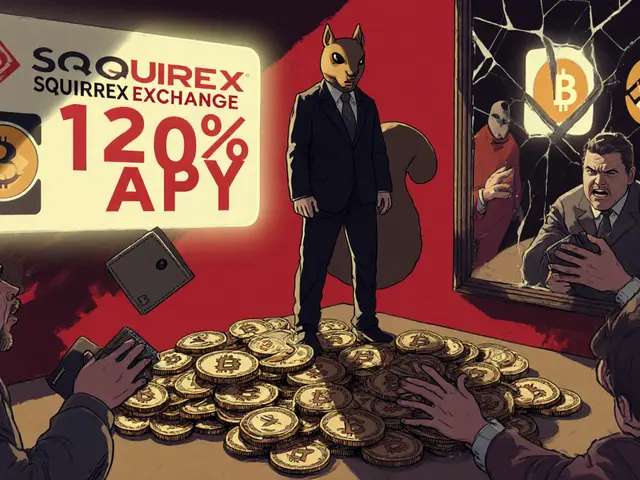
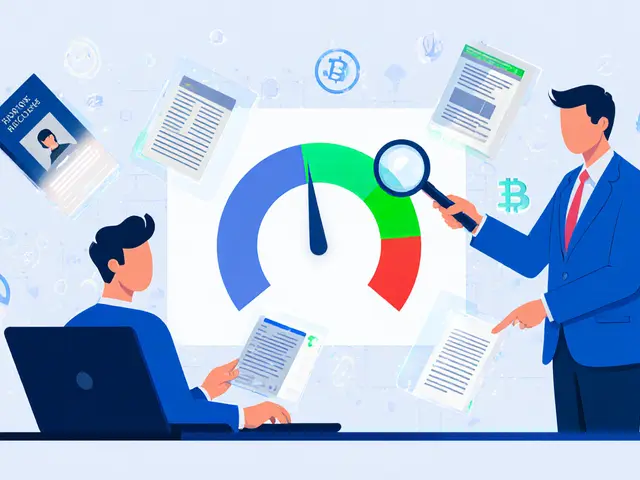
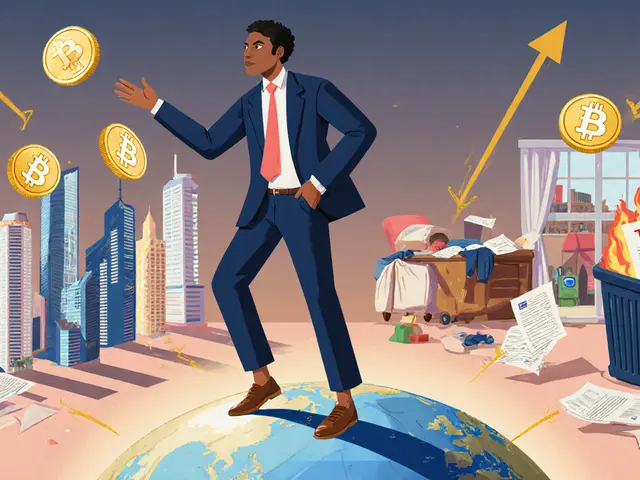
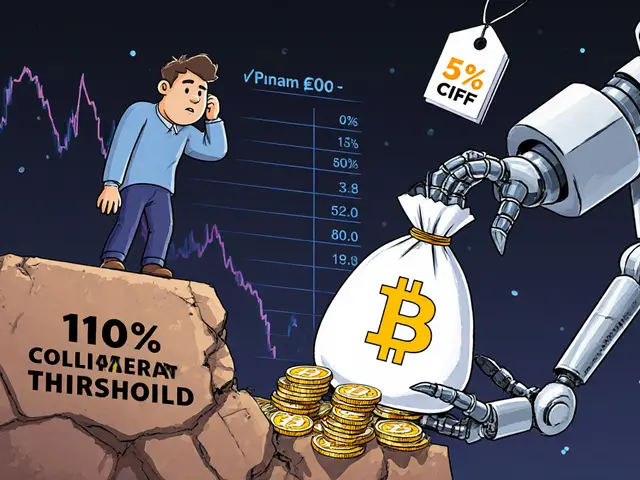

People Comments
It’s fascinating, really, how Argentinians have turned to crypto, especially stablecoins, as a shield against the relentless tide of inflation; the daily headlines scream about price hikes, yet many families find solace in digital assets, preserving purchasing power, and fostering a sense of financial autonomy, which is, in my view, a profound cultural shift.
The article, while optimistic, neglects the volatility inherent in many cryptocurrencies, overlooks regulatory uncertainties, and fails to address the digital divide that leaves large segments of the population unable to access stablecoins; such omissions, frankly, undermine the credibility of the analysis.
I appreciate the insight into how stablecoins can act as a hedge; it’s a pragmatic approach, especially given Argentina’s staggering 45% inflation rate, and it opens a conversation about financial inclusion without demonizing traditional banking systems.
Oh great, another crypto savior, because that always works out perfectly.
When I read about Argentinians turning to stablecoins, I cannot help but feel a surge of admiration mixed with a tinge of concern; the sheer audacity to bypass a failing fiat system, to trust digital tokens, is both revolutionary and precarious. The historical context of hyperinflation in Argentina, recall the 1980s, is a haunting reminder of economic fragility. Yet, the narrative that crypto is a panacea, that it alone can rescue households, glosses over the reality of market fluctuations. Many families lack the technological literacy required to securely store private keys, exposing them to scams. Moreover, the legal gray area surrounding stablecoins leaves users vulnerable to abrupt policy shifts. The government’s recent crackdown on crypto exchanges further complicates the landscape. While the promise of preserving purchasing power is alluring, the associated risks-price depegging, platform insolvency-cannot be ignored. It is essential to balance optimism with sober risk assessment. Education initiatives, robust consumer protections, and transparent regulations are indispensable. In the meantime, the community’s ingenuity, using peer‑to‑peer networks, is commendable. Still, one must ask: are we witnessing a sustainable financial evolution, or a fleeting band‑aid for deeper structural problems? Only time will reveal the true impact of this digital migration. Investors will inevitably test the resilience of these platforms under stress. The broader economic reforms, if any, will dictate whether crypto remains a fringe solution or becomes mainstream. Until then, caution and critical scrutiny remain our best allies. Ultimately, responsible adoption paired with systemic reforms offers the best hope for long‑term stability.
From a nationalistic perspective, it is imperative that we scrutinize the reliance on foreign‑issued stablecoins, as such dependency may erode sovereign monetary authority; consequently, the state must consider regulatory measures to ensure that the adoption of these digital assets does not compromise national economic interests.
Think about it: money is just a collective belief, and when that belief is shaken by soaring prices, people naturally seek alternatives that feel more trustworthy, even if those alternatives live on the internet.
Great point! 🌟 Using stablecoins can really help keep your savings safe from inflation, and it’s awesome to see more people exploring this option. Keep learning and stay empowered! 👍
Crypto shields our wallets from the Argentine government's failures.
While the macro‑economic underpinnings of hyperinflation necessitate a diversification of asset classes, the liquidity provision mechanisms inherent to algorithmically pegged stablecoins present a nuanced hedging strategy that warrants rigorous quantitative modeling, particularly in the context of stochastic volatility and regime‑switching dynamics.
It’s encouraging to see communities gravitate toward innovative financial tools; they embody resilience, and that spirit drives progress. 🌱 Remember, every step toward financial literacy is a victory. 😊
Picture this: a family in Buenos Aires, watching their paycheck evaporate day by day, suddenly discovers that a few tokens in a digital wallet can halt that decay. It’s not just a financial maneuver; it’s a lifeline, a dramatic twist in their economic saga.
We must champion domestic solutions, yet acknowledge that stablecoins, despite being foreign‑issued, currently provide the most viable defense against runaway inflation for everyday Argentinians.
The analysis presented oversimplifies a complex phenomenon, ignoring systemic risk factors and the seductive illusion that crypto is inherently safe; such naiveté does a disservice to informed readers.
It’s heartening to see individuals taking control of their financial futures; this proactive mindset can inspire broader economic empowerment across the country.
Interesting take! I’m curious how the regulatory framework will evolve to accommodate stablecoins while protecting consumers, especially given Argentina’s turbulent monetary history.
Cool article, definitely makes you think about how money works these days.
What a vivid illustration of resilience! By leveraging stablecoins, Argentinians are painting a bright, technicolor future amidst a gray, inflation‑ridden landscape.
Yo, this crypto hustle is the only way to keep our cash from melting away, no joke.
I don’t trust any foreign coins; we should build our own system.
In light of the persistent inflationary pressures, it is both prudent and commendable for citizens to explore alternative stores of value, thereby diversifying risk and enhancing financial stability.
Honestly, I think people are overhyped about stablecoins; they’re just another fad.
Yo, u r right, stablecoins r kinda cool but watch out for scammys and keep ur keys safe!
Great insight! If you’re considering stablecoins, start with a reputable platform, learn how to secure your wallet, and watch how it can preserve your buying power over time.